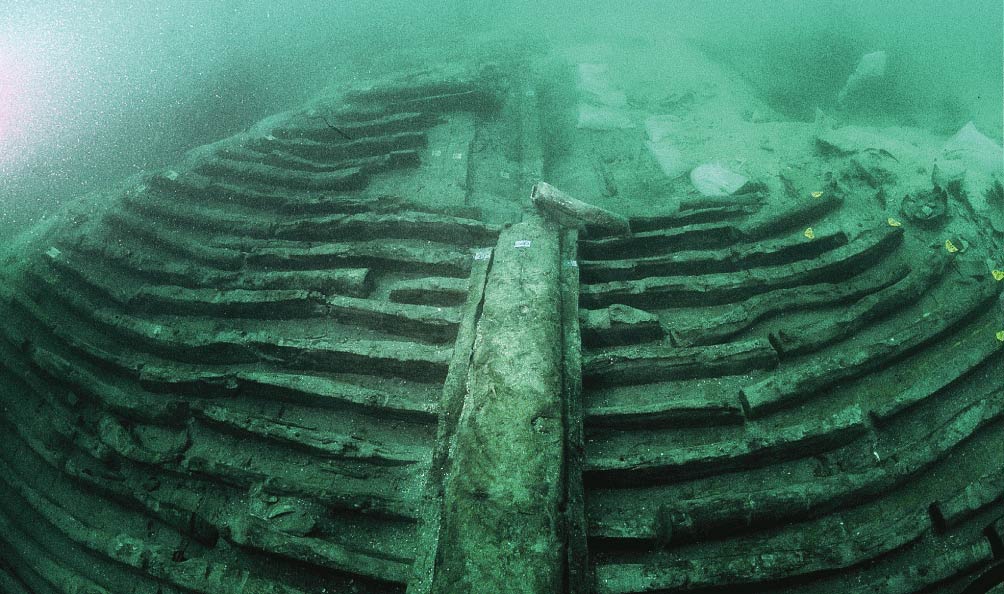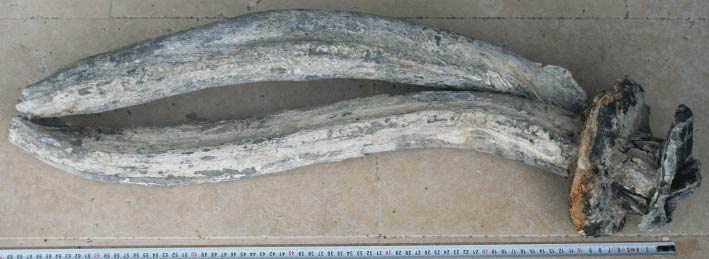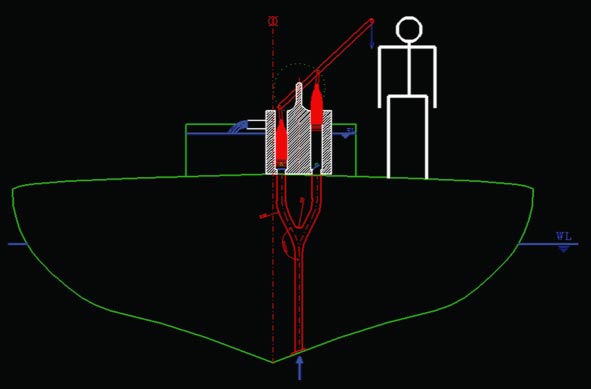Ancient Roman Shipwreck May Have Held Giant Fish Tank

An ancient Roman shipwreck nearly 2,000 years old may once have held an aquarium onboard capable of carrying live fish, archaeologists suggest.
The shipwreck, which lay 6 miles (nearly 10 kilometers) off the town of Grado in Italy, was discovered by accident in 1986. Approximately 55 feet (16.5 meters) long, it dated back to the mid-second century and had a cargo of about 600 large vases known as amphoras that contained sardines, salted mackerel and other fish products.
Curiously, its hull possessed a unique feature — near its keel was a lead pipe at least 2.7 inches (7 cm) wide and 51 inches (1.3 meters) long. Why pierce its bottom with a hole that seawater could rise up?

Scientists now suggest this pipe was connected to a hand-operated pump to suck up water. The aim? To keep a constant supply of flowing, oxygenated water into a fish tank onboard the ship. [Images of device and shipwreck]
"Historians think that before the invention of the freezer, the only possibility to trade fish was to salt or dry it, but now we know that it was possible to move it alive also for quite a long distance," researcher Carlo Beltrame, an archaeologist at Ca' Foscari University of Venice, told LiveScience.
A number of texts from antiquity have contentiously suggested the ancient Romans could transport live fish by sea. For instance, the scientist, Roman officer and historian Pliny the Elder spoke of transport of parrotfish from the Black Sea to the coast of Naples.

They estimate an aquarium behind the mast of the ship could have measured about 11.4 feet by 6.5 feet by 3.3 feet (3.5 m by 2 m by 1 m) for a capacity of approximately 250 cubic feet (7 cubic meters). For comparison, an average bathtub has a volume of about 7 cubic feet. If properly maintained, it could help keep at least 440 pounds (200 kg) of live fish such as sea bass or sea bream, they noted.
Get the world’s most fascinating discoveries delivered straight to your inbox.
"This simple apparatus implies that, as attested by some ancient authors, the trade of live fish in antiquity was possible," Beltrame said.
Intriguingly, the researchers added that the Istria coast, which is only a few hours by boat from Grado, was known for numerous vivaria — enclosures for keeping live animals. Perhaps ships capable of transporting live fish brought such cargo to large markets, the researchers speculated.
Beltrame noted the existing archaeological evidence for their idea was poor. They now plan to reconstruct the apparatus to test how well it might have worked.
The scientists detailed their findings online March 11 in the International Journal of Nautical Archaeology.
Follow LiveScience for the latest in science news and discoveries on Twitter @livescience and on Facebook.

